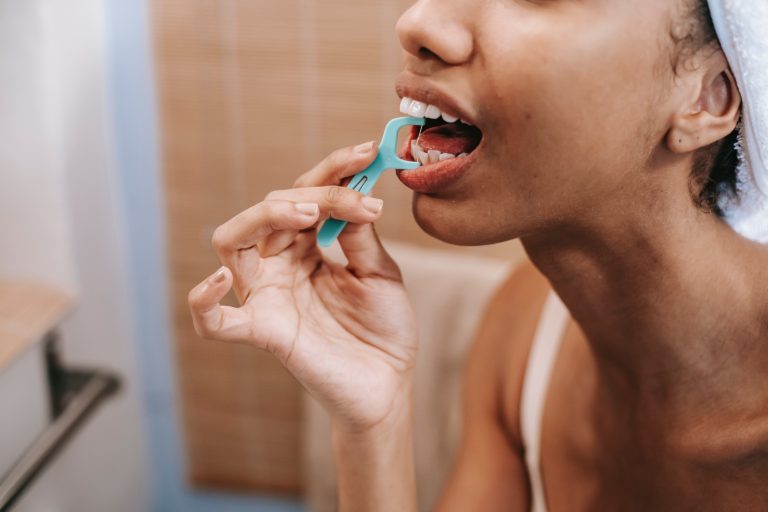
Flossing is important for many reasons, but mainly, it’s the key to fantastic oral health.
Flossing is one of the ways to clean between your teeth and below the gum line to remove the plaque and bacteria that cause gum disease.
The act of flossing breaks up plaque and bacterial biofilm on your teeth. If this bacteria-ridden biofilm is allowed to remain on your teeth, it colonizes and actually changes the chemistry of your mouth. (Ew!)
Not flossing puts you at risk of developing an infection, which could deteriorate the structures in your mouth that support your teeth. It may cause gingivitis, which could lead to a gum disease called periodontitis. Neglecting to floss can also eventually lead to tooth loss if the diseases are severe enough.
You need to floss in order to clean out the gaps between your teeth, where bacteria often reside. If you don’t floss, you’re more likely to have plaque buildup, which can lead to cavities, tooth decay, and gum disease. If left untreated, gum disease can be a risk factor for heart disease, diabetes, and a high body mass index. In addition, bacteria can cause bad breath; plus, having food or debris between your teeth can make them look less clean or white. Thus, flossing can help improve the appearance of your mouth as well as your dental hygiene and overall health.
We know we should floss at least once a day, but not everyone knows the right way to do it. Use this step-by-step guide to find out how to properly floss your teeth:
Talk to your team at The Dental Care Center about what types of oral care products will be most effective for you and if you have any questions about flossing.